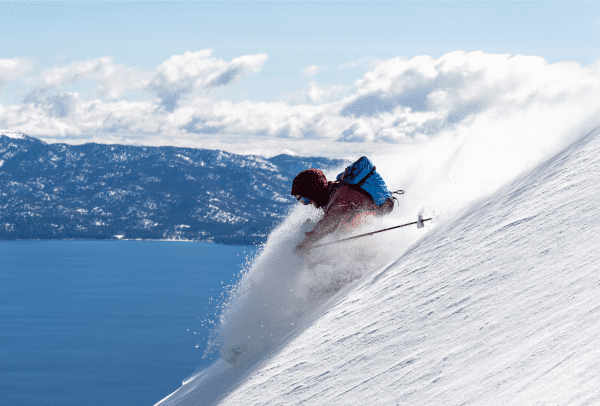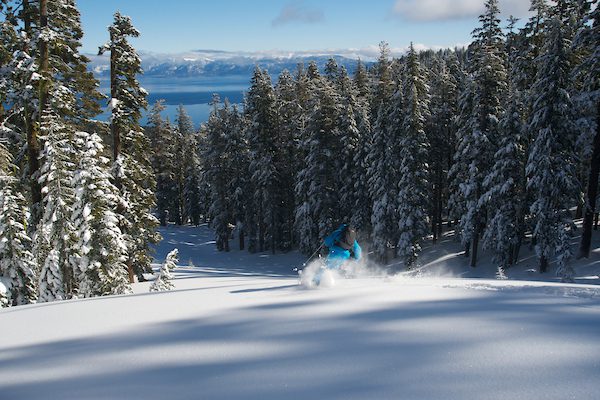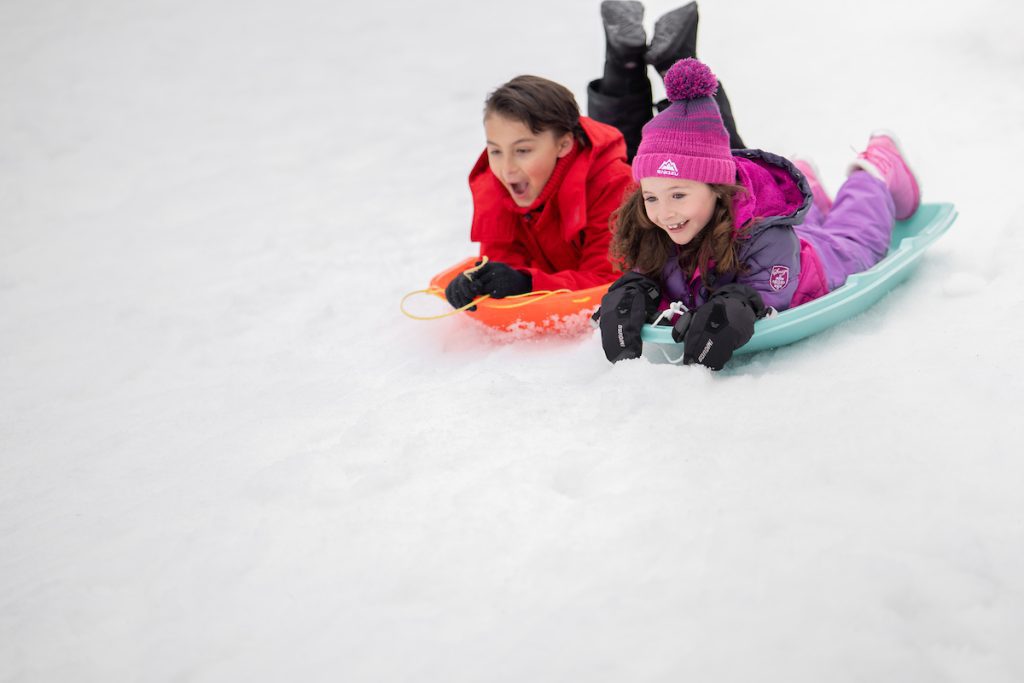It’s finally here: the start of Lake Tahoe’s most anticipated season of the year. As snowfall begins to really pick up, the weather is ideal for a ski trip. The best way to ski in this paradise? Head to one of the 11 downhill ski resorts, where you’ll have access to runs for all ski levels, private or group lessons, a wide array of dining and entertainment options and so much more. This winter, if you plan to embark on any kind of backcountry ski adventures, be sure to read up on how to stay backcountry safe in Lake Tahoe. December 11-16 is Backcountry Safety Awareness Week, making this a perfect time to get educated on backcountry safety and etiquette.
What Is Backcountry Skiing?
Backcountry skiing is any kind of skiing that you do outside the boundary of resort trails in an uncontrolled and unpatrolled terrain. Essentially, it’s a more freestyle approach to skiing — rather than skiing on groomed trails that have the benefit of a ski patrol, you’re on your own to make the trek through the Lake Tahoe wilderness. This activity is inappropriate unless you are an expert skier. You need to be extremely comfortable on skis and prepared to be self-reliant through your entire trip.
Backcountry Safety in Lake Tahoe
First and foremost, you need to make sure you and anyone you are skiing with are educated and up-to-date on the basics of backcountry skiing. It might seem like an obvious question, but be sure to verbally confirm with everyone in your party that they are all comfortable skiing in variable terrain and deep pow. Additionally, make sure to take a class, such as those available through any of the avalanche centers nearby in Lake Tahoe. Even if you are a seasoned skier, ensuring your knowledge of avalanches is comprehensive is absolutely essential ahead of any backcountry skiing expedition. Check out a full list of backcountry training programs available in the area. With these classes, you can learn the essentials of backcountry safety, including what to do in emergency situations such as an avalanche, the basics of backcountry field medicine and lessons on backcountry skiing for beginners.
Once you have taken the proper classes, return to the old adage: practice makes perfect. Instead of forging out onto the slopes immediately, take the time to practice your ski skills in a safe, controlled environment — open meadows, for instance, make great practice arenas for basic ski practicing. Additionally, make sure you practice emergency response scenarios and test your gear multiple times in these practice environments.
As we mentioned before, you must be prepared to be entirely self-reliant on a backcountry ski trip. These ski trails are not patrolled by ski patrols in the way that resort ski trails are, and medical assistance likely will not be readily available should it become necessary. Ahead of your trip, ensure that you have all the materials you will need out in the Tahoe wilderness. Aside from the ski essentials — skis, helmets, poles, climbing skins, etc. — make sure to bring first aid kits, water, food, navigation tools and, of course, avalanche safety equipment: an avalanche transceiver, a shovel and a probe. This is not a comprehensive list. For more detailed information on what to bring, important safety information and more, check out Take Care Tahoe’s upcoming events and information for Backcountry Safety Awareness Week 2023.
Lake Tahoe Backcountry Ski Etiquette
Hand-in-hand with safety protocols, you should make sure to follow a few basic etiquette rules while out on your backcountry trip. These rules guarantee that everyone can coexist peacefully out on their ski trips and allows everyone to maintain the natural environment of Lake Tahoe’s backcountry ski trails.
If you bring portable speakers, please keep your music to a reasonable volume so as not to bother other skiers. It can be fun to add a soundtrack to your backcountry ski adventure (pro tip: check out our Tahoe Art Haus & Cinema ski movie-inspired playlist for your next ski trip’s jams!) but as always, be respectful of others skiing in the area whose music tastes might not align with yours.
Leave the area better than you found it. If you have your dog with you, keep your pup on a leash and make sure to clean up after it. Be mindful of packing up and out any trash you might accumulate over the course of the trip.
As a general rule, be courteous going uphill. Control your dog, climb uphill single-file to allow room for passing, yield to downhill traffic and be wary of climbing uphill anywhere that a downhill skier might have trouble seeing you. If there is already a track established, don’t try and make an alternate route — preserve the snow as much as possible and follow the skin track (a clearly visible track created by skiing uphill) already in place. If there isn’t one already there, make sure to set a clear, efficient and safe track for anyone coming up behind you.
Happy Skiing, Tahoe!
If the proper precautions are followed, backcountry skiing can be a great way to get out and explore Lake Tahoe’s stunning winter vistas this season. Join us for Backcountry Safety Awareness Week 2023 and stay educated on avalanche information, tips for navigating the backcountry and much more. Whether you’re planning to backcountry ski or you prefer to explore Lake Tahoe from a different angle, it’s not too late to book your stay for your winter getaway. Check out our winter landing page for trip inspiration, and be sure to visit our winter transit guide so you can best prepare for your Lake Tahoe trip. Bundle up, and we’ll see you soon!











